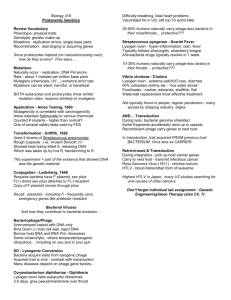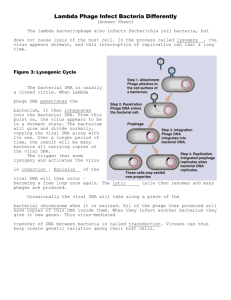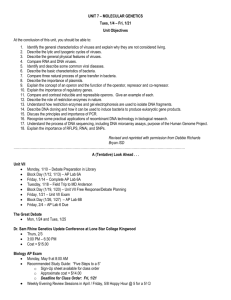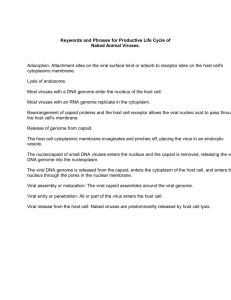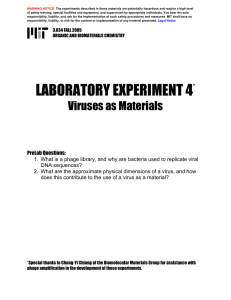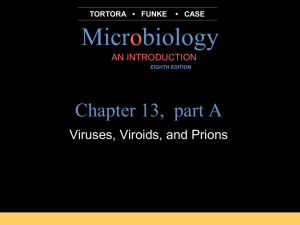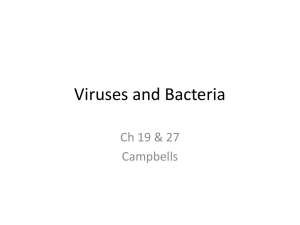Chapter 6 Viruses
advertisement
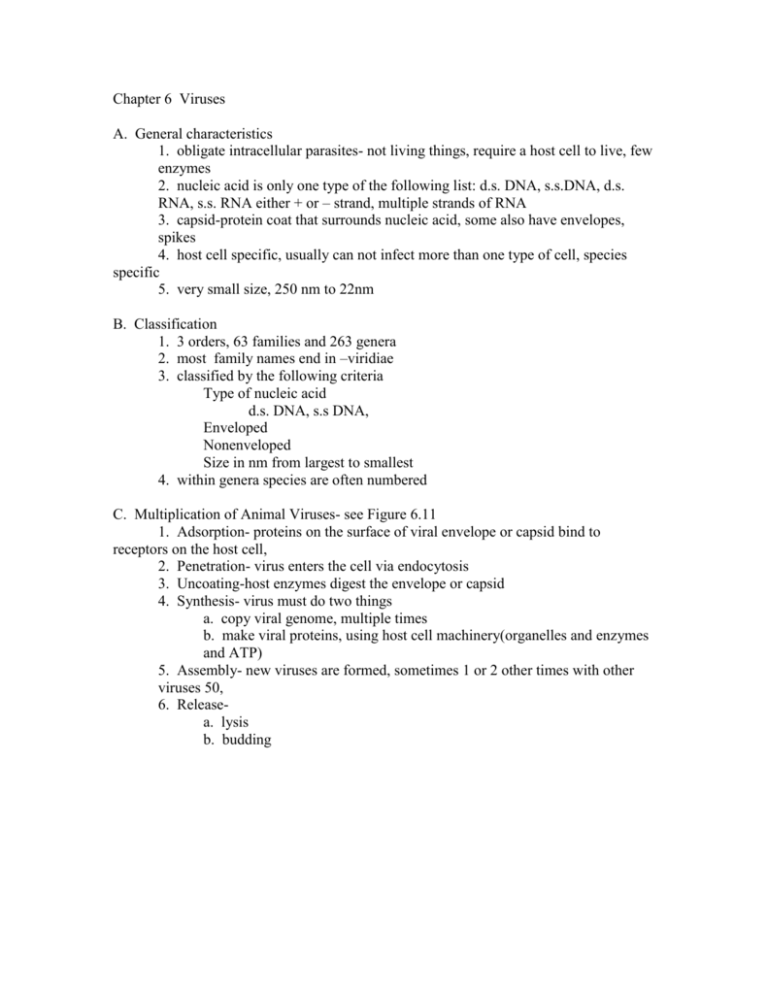
Chapter 6 Viruses A. General characteristics 1. obligate intracellular parasites- not living things, require a host cell to live, few enzymes 2. nucleic acid is only one type of the following list: d.s. DNA, s.s.DNA, d.s. RNA, s.s. RNA either + or – strand, multiple strands of RNA 3. capsid-protein coat that surrounds nucleic acid, some also have envelopes, spikes 4. host cell specific, usually can not infect more than one type of cell, species specific 5. very small size, 250 nm to 22nm B. Classification 1. 3 orders, 63 families and 263 genera 2. most family names end in –viridiae 3. classified by the following criteria Type of nucleic acid d.s. DNA, s.s DNA, Enveloped Nonenveloped Size in nm from largest to smallest 4. within genera species are often numbered C. Multiplication of Animal Viruses- see Figure 6.11 1. Adsorption- proteins on the surface of viral envelope or capsid bind to receptors on the host cell, 2. Penetration- virus enters the cell via endocytosis 3. Uncoating-host enzymes digest the envelope or capsid 4. Synthesis- virus must do two things a. copy viral genome, multiple times b. make viral proteins, using host cell machinery(organelles and enzymes and ATP) 5. Assembly- new viruses are formed, sometimes 1 or 2 other times with other viruses 50, 6. Releasea. lysis b. budding D. Cytopathic effects of viral infection on host cells 1. syncytium- formation of a giant cell because neighboring cells fuse, signaling destroyed, cell dies 2. inclusions bodies- assembled virion particles in an infected cell 3. inhibition of mitosis 4. loss of contact inhibition 5. transformation- alter cell’s DNA, oncogenic virus causes cancer 6. destruction of lysosomes and thus of the host cell E. Bacteriophage Multiplication 1. T-even phages-lytic a. Attachment/Adsorption-bind to receptors on the host E. coli b. Penetration- lysozyme, compression, injection of phage DNA, empty phage head stays outside Fig 6.18 c. Biosynthesis- copy viral DNA and make viral proteins for capsid, sheath and tail fibers, 50-200 phage/E. coli d. Assembly f. Release- lysis and count plaques in the media 2. Lambda phage-lysogenic phage which means integrates into host chromosome and does not kill immediately a. Attachment b. Penetration- circularizes it’s DNA like a plasmid and then there is a branched path- lytic as described above for T-even or lysogenic Lysogeny the phage DNA inserts itself into the host DNA and now it is called a prophage and will be copied every time the E.coli divides Will remain lysogenic until cell is stressed out c. Phage cut’s its DNA out and begins a lytic cycle d. Biosynthesis e. Maturation f. Release 3. Advantages for the host bacterial cell to have a prophage or lysogenic conversion a. resistant to superinfection b. gain genes for toxins, antibiotic resisitance, enzymes c. gain genes from other host cells via specialized transduction- see end of Ch. 9 F. Cultivation of viruses 1. bacteriophage- bacteria and media, pfu 2. animal viruses a. in vivo b. in vitro- cell culture c. in embryonated chicken eggs
